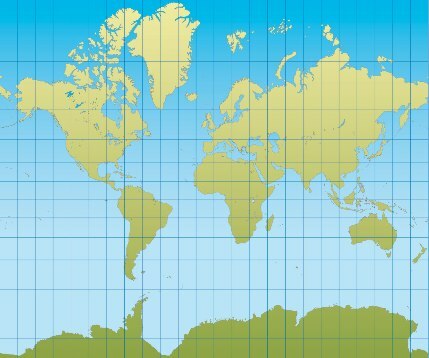O remote sensing is the set of techniques and technological procedures aimed at representing and collecting data from the earth's surface without the need for direct contact. Therefore, all information is obtained through sensors and instruments in general. This process is linked to the treatment, storage and analysis of such data in order to better understand the phenomena that appear on the surface.
The use of this type of technique is of fundamental importance in the current context of societies, as it is capable of revealing many geographic data and even histories concerning natural and social spaces, such as the distribution of forest areas, the advance of deforestation, the growth of areas urban areas, etc.
It can be said that remote sensing emerged right after the invention of the camera, when it became possible to record images from the sky. Initially, pigeons or balloons were used in order to capture images of the surface seen from above, generally for the recognition of places or production of maps. In times of war, this was also an important strategy for reconnaissance of enemy territory, which helped in the elaboration of attack and counter-attack plans.
And speaking of war, it was during World War I (1914-1918) that this system began to improve through the use of newly invented aircraft. The set of techniques for recording the surface through photography was called aerophotogrammetry, which, in addition to recording the image, also consisted of treating the image and its adaptations to produce views of entire areas. This procedure is still widely performed today.
In addition to aerophotogrammetry, another widely used remote sensing resource is satellites. With them, it became possible to record images on a small scale, that is, large areas; or even maps with varied and flexible scales, enabling the management of different location and thematic maps.
Do not stop now... There's more after the advertising ;)
Among the most important satellites used by us for observation and recording of surface information are the Landsat it's the CBERS (Sino-Brazilian Earth Resources Satellite). The first was first released by the North American Space Agency (NASA) in 1972, with other more modern versions built later, so the most recent is the Landsat 7. already the CBERS is the result of a partnership between Brazil and China, whose first launch took place in 1999, while the most recent, the CBERS 3, was released in 2011.

Satellites are among the most important elements of remote sensing
Thanks to satellites, the making of thematic maps with the most varied scales of coverage is possible, as already mentioned. Thus, it is possible to obtain information and register cartograms on forms of relief, topography, human occupation, among others. There is also the meteorological functionality, in which the movement of air masses is captured in order to help forecast the weather, which also has many other instruments.
We can say, therefore, that remote sensing is one of the greatest advances ever produced by science and technology with regard to the study of the terrestrial surface and, why not say, of all the elements that make up the biosphere. Thus, progress was made in monitoring natural and anthropogenic phenomena, such as monitoring the advance of deforestation and others. A good example of remote sensing is also the Google Earth, which integrates a combination of satellite images, aerial photogrammetry and even images recorded on the streets in order to help us locate and move around different places.
By Me. Rodolfo Alves Pena
Would you like to reference this text in a school or academic work? Look:
PENA, Rodolfo F. Alves. "Remote sensing"; Brazil School. Available in: https://brasilescola.uol.com.br/geografia/sensoriamento-remoto.htm. Accessed on June 27, 2021.


